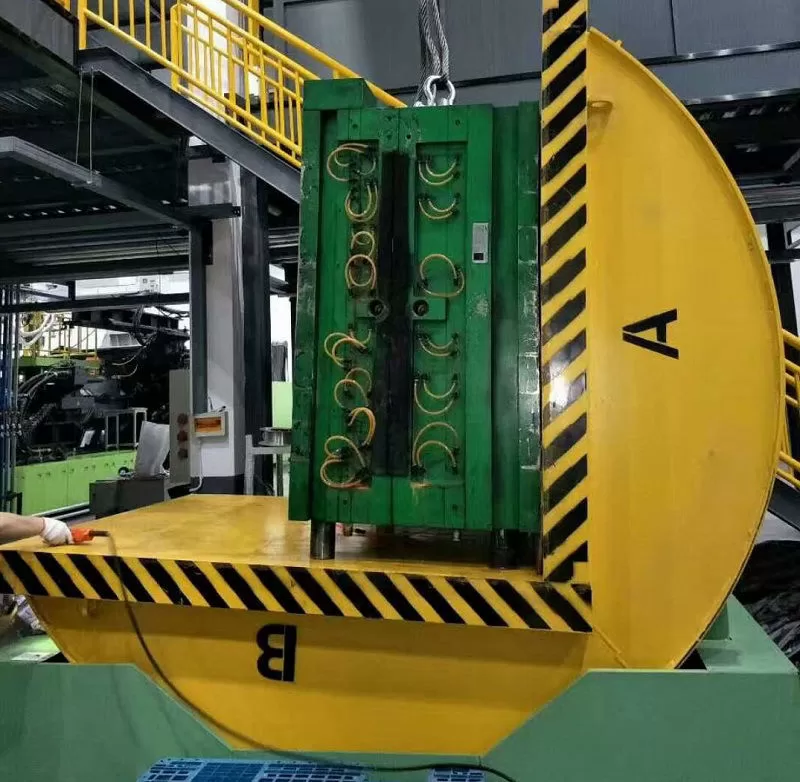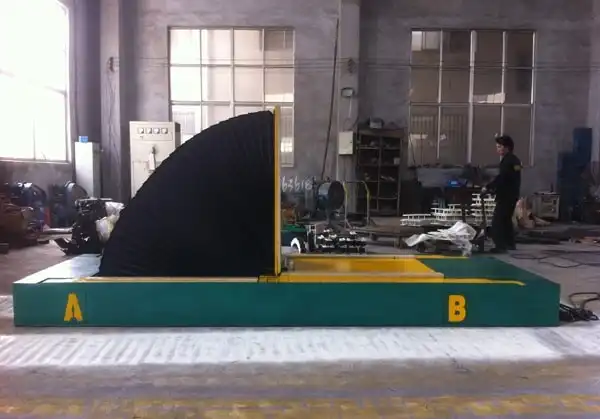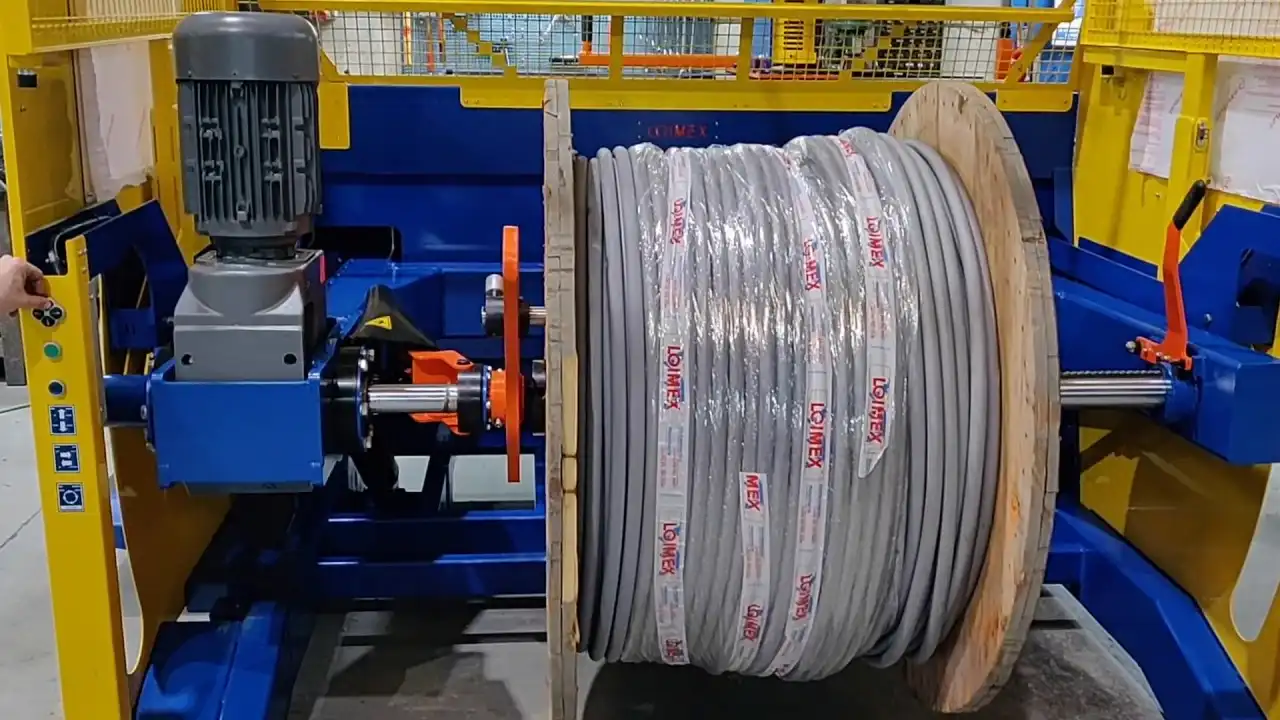How Quickly Can a Mold Upender Investment Pay for Itself?
Struggling with the risks and inefficiencies of manually handling heavy, cumbersome molds? The potential for worker injury, mold damage, and costly downtime looms large. Investing in a mold upender promises a safer, faster solution, but justifying the capital expenditure requires understanding its financial return. How fast can this essential equipment truly pay for itself?

The payback period for a mold upender investment typically ranges from less than one year to three years. This relatively rapid return is driven by significant savings in labor costs, drastically reduced risk of worker injury and associated expenses, minimized mold damage, and increased operational efficiency. Factors like frequency of use, labor rates, and the cost of potential accidents heavily influence the exact timeframe for recouping the initial investment.
Calculating this payback period isn’t just a financial exercise; it’s a critical step in demonstrating the tangible value a mold upender brings to your operations. Understanding the components of this calculation empowers decision-makers to confidently invest in safety and efficiency. Let’s delve into how to determine the precise payback timeline for your specific scenario.
Calculating the Payback Period for Your Mold Upender
Justifying capital equipment purchases like a mold upender requires solid financial reasoning. The payback period is a fundamental metric, offering a clear timeline for recouping the initial outlay through operational savings. It’s a straightforward indicator of how quickly an investment starts generating positive financial returns, making it essential for comparing projects and securing budget approvals in a results-driven industrial environment.
To calculate the payback period for a mold upender, you divide the total initial investment cost by the total annual savings generated by the equipment. The formula is: Payback Period (in years) = Total Initial Investment / Total Annual Savings. The initial investment includes the purchase price, shipping, installation, and any necessary training. Annual savings encompass reduced labor hours for mold handling, elimination of costs associated with injuries (medical, insurance, lost time), prevention of expensive mold damage, and gains from increased machine uptime or throughput due to faster mold changes.

Breaking Down the Costs and Savings
Accurately calculating the payback period hinges on meticulously identifying all relevant costs and quantifying the expected savings. This detailed analysis provides the foundation for a realistic financial projection.
Identifying Initial Investment Costs
The upfront cost goes beyond the sticker price of the mold upender itself. A comprehensive view includes:
- Purchase Price: The base cost of the mold upender unit suited to your capacity and feature requirements.
- Shipping and Freight: Costs associated with transporting the heavy equipment to your facility.
- Installation: Labor and materials required for positioning, anchoring, and connecting the upender to power sources. This might include minor facility modifications.
- Training: Costs for instructing operators and maintenance personnel on safe and efficient use, as well as routine upkeep.
- Ancillary Equipment: Potential need for specialized rigging, floor reinforcements, or safety barriers.
Quantifying Annual Savings
The true value emerges in the annual operational savings generated by the mold upender:
- Reduced Labor Costs: Calculate the time saved per mold rotation/handling task compared to manual methods (e.g., using cranes, forklifts, or multiple personnel). Multiply this time saving by the number of tasks per year and the burdened labor rate (including wages, benefits, overhead).
- Injury Prevention Costs: Estimate the potential cost avoidance. Consider average costs for back injuries, strains, or crushing incidents common in manual mold handling (medical treatment, insurance premium hikes, lost workdays, potential legal fees). Even preventing one serious incident can represent massive savings.
- Reduced Mold Damage: Manual handling significantly increases the risk of dropping or mishandling expensive molds. Estimate the annual cost of repairs or replacements due to such incidents that the upender will prevent.
- Increased Uptime/Throughput: Faster, safer mold changes mean less downtime for production machinery (like injection molding presses or die-casting machines). Quantify the value of this additional production time based on your output value per hour.
- Improved Ergonomics & Morale: While harder to quantify directly in dollars, reduced physical strain improves worker morale and potentially lowers turnover, which has indirect cost savings.
Example Payback Calculation
Let’s consider a hypothetical scenario:
| Cost/Saving Component | Description | Amount | Notes |
|---|---|---|---|
| Initial Investment | |||
| Mold Upender Purchase Price | 5-Ton Capacity Unit | $25,000 | |
| Shipping & Installation | Freight, rigging, electrical hookup | $3,000 | |
| Operator Training | On-site training for 4 operators | $1,000 | |
| Total Initial Investment | $29,000 | ||
| Annual Savings | |||
| Labor Savings | 1.5 hrs saved/change x 200 changes/yr x $50/hr rate | $15,000 | Burdened labor rate |
| Injury Prevention | Estimated avoidance of 1 minor incident/yr | $5,000 | Conservative estimate based on past data |
| Mold Damage Reduction | Avoidance of 1 damage incident ($10k) every 2 years | $5,000 | Average annual saving |
| Increased Uptime | 1 hr less downtime/change x 200 changes/yr x $100/hr | $20,000 | Value of additional production output |
| Total Annual Savings | $45,000 | ||
| Payback Period | $29,000 / $45,000 | 0.64 years | Approximately 7.7 months |
In this example, the investment pays for itself in well under a year, demonstrating a strong financial case primarily driven by labor savings and increased production uptime.
Key Factors Influencing Mold Upender ROI
While the calculation method is straightforward, the actual return on investment (ROI) and payback period for a mold upender are highly sensitive to specific operational variables. Understanding these factors allows for a more accurate projection and highlights where the upender delivers the most significant impact within your facility.
The speed at which a mold upender pays for itself is significantly influenced by the frequency of mold handling tasks, the weight and complexity of the molds, prevailing labor costs, the facility’s existing safety record regarding manual handling incidents, and the potential gains in production throughput enabled by faster changeovers. Facilities with frequent mold changes, high labor rates, or costly molds see the quickest returns.
Deeper Dive into Influential Variables
Let’s explore how key operational factors directly impact the payback calculation:
- Frequency of Mold Changes/Handling: This is often the most significant driver. A facility performing multiple mold rotations daily or weekly will accumulate labor and time savings much faster than one handling molds only monthly. High-mix, low-volume production environments typically benefit greatly. Quantify the number of rotations, inspections, or maintenance tasks requiring mold repositioning annually.
- Mold Weight, Size, and Complexity: Heavier, larger, or more complex molds inherently pose greater risks and require more time and personnel for manual handling. The safety and efficiency gains from an upender are amplified in these situations, shortening the payback period. Damage to an expensive, complex mold is also far more costly, making prevention a higher priority.
- Labor Costs: Higher burdened labor rates (including wages, benefits, insurance, overhead) directly translate into greater savings for every hour eliminated by the upender. Facilities in high-cost labor markets will see a faster payback compared to those with lower labor expenses, assuming similar usage frequency.
- Safety Record and Costs: Facilities with a history of manual handling injuries (e.g., back strains, pinched fingers, dropped loads) have a clear, quantifiable cost baseline that the upender addresses. The direct (medical, insurance) and indirect (lost productivity, administrative time) costs of these incidents contribute significantly to the "Savings" side of the payback equation. A strong safety culture actively seeking risk reduction will value the upender’s contribution highly.
- Production Throughput Value: If mold changes are a bottleneck limiting production machine uptime (e.g., injection molding presses), the value of reducing that downtime is substantial. Calculate the profit generated per hour of machine operation; every hour saved during a changeover directly adds to the annual savings attributable to the upender.
- Mold Maintenance Practices: If molds require frequent opening, cleaning, or repair that necessitates rotation, the upender streamlines this process, reducing maintenance labor time and minimizing the risk of damage during these essential tasks.
- Current Handling Methods: Compare the upender’s efficiency against your existing method (e.g., crane with straps, forklift manipulations, manual team effort). The greater the inefficiency and risk of the current method, the more dramatic the savings and the faster the payback from the upender investment.
By analyzing these specific factors within your own operational context, you can build a much more precise and compelling business case for investing in a mold upender, accurately forecasting its ROI and payback timeline.
Strategies to Accelerate Your Mold Upender Payback
Concerned that the initial payback calculation seems longer than desired? Don’t just accept the initial estimate. Proactive operational adjustments and maximizing the upender’s utility can significantly shorten the time it takes to recoup your investment, turning a good investment into a great one even faster.
To accelerate the payback period for your mold upender, focus on maximizing its utilization through efficient scheduling and integrating its use into standard operating procedures for all mold handling tasks. Ensure operators are thoroughly trained for speed and safety, and actively leverage the downstream benefits like reduced mold damage and faster changeovers to increase overall production output, thereby boosting the annual savings.
Optimizing Operations for Faster Returns
Implementing specific strategies can demonstrably shorten the payback period:
Maximizing Utilization
Ensure the upender isn’t sitting idle. Analyze workflows to identify all instances where molds are rotated or repositioned, not just major changeovers. This includes setup, maintenance, inspection, and storage preparation. Schedule tasks to group mold handling activities, maximizing the upender’s use during operator shifts. If feasible, consider its availability across multiple shifts to increase the annual number of operations it performs, directly boosting labor savings.
Integrating into Workflow and SOPs
Formalize the use of the mold upender in your Standard Operating Procedures (SOPs). Mandate its use for specific tasks previously done manually or with less efficient equipment. This ensures consistency, reinforces safety protocols, and guarantees the anticipated time savings are realized. Discourage reverting to old, riskier methods. Train supervisors to enforce these procedures.
Leveraging Secondary Benefits Actively
Don’t just passively count savings; actively leverage the advantages.
- Reduced Downtime: Work with production planning to immediately utilize the time saved during changeovers for additional production runs. Quantify this gain.
- Reduced Damage: Track the reduction in mold repair costs and factor it explicitly into ongoing ROI reviews. Use this data to justify potential investments in more upenders if bottlenecks persist elsewhere.
- Labor Reallocation: Ensure that the labor hours saved are either eliminated (cost reduction) or productively reallocated to value-adding tasks, rather than simply becoming idle time.
- Safety Marketing: Promote the improved safety environment internally to boost morale and potentially externally to enhance company reputation.
Comparative Scenario Analysis
A simple analysis can illustrate the impact of optimization:
| Factor | Baseline Scenario (Standard Use) | Optimized Scenario (Maximized Use) | Notes |
|---|---|---|---|
| Initial Investment | $29,000 | $29,000 | Same equipment cost |
| Mold Rotations/Year | 200 | 350 | Found more applications, integrated into SOPs, multi-shift use |
| Labor Savings | $15,000 | $26,250 | (1.5 hrs saved/rotation 350 rotations $50/hr) |
| Injury Prevention Savings | $5,000 | $5,000 | Assumed constant for simplicity, could potentially increase |
| Mold Damage Reduction | $5,000 | $5,000 | Assumed constant, could potentially increase slightly |
| Increased Uptime Savings | $20,000 | $35,000 | (1 hr saved/rotation 350 rotations $100/hr) |
| Total Annual Savings | $45,000 | $71,250 | Significant increase due to utilization & throughput gains |
| Payback Period (Years) | 0.64 Years | 0.41 Years | ($29,000 / $71,250) |
| Payback Period (Months) | ~7.7 Months | ~4.9 Months | Payback accelerated by nearly 3 months through optimization |
This table clearly demonstrates how actively managing the upender’s integration and leveraging its benefits can significantly shorten the payback period, making the investment even more financially attractive.
Beyond Payback: Long-Term Value of a Mold Upender
Focusing solely on the payback period overlooks the substantial, enduring benefits a mold upender provides long after the initial investment has been recouped. While rapid payback is attractive, the sustained value across safety, operations, and asset management reinforces the strategic importance of this equipment in modern manufacturing.
Beyond the initial payback calculation, the long-term value of a mold upender manifests in a significantly enhanced workplace safety culture, reduced musculoskeletal disorders among staff, consistent preservation of expensive mold assets leading to better product quality, increased operational flexibility, easier compliance with evolving ergonomic and safety regulations, and improved overall predictability in maintenance and production scheduling. These ongoing advantages contribute to sustained profitability and operational excellence.
Investing in a mold upender is not merely about short-term cost recovery; it’s about fundamentally improving the way molds are handled, yielding benefits year after year. The reduction in physical strain on employees fosters a safer work environment, potentially lowering worker compensation claims and insurance premiums over the long haul. Protecting molds from accidental damage during handling extends their lifespan, ensures consistent part quality, and avoids costly emergency repairs or replacements. The speed and predictability offered by the upender contribute to smoother production flow, enabling better planning and responsiveness to market demands. Furthermore, demonstrating a commitment to state-of-the-art safety equipment can enhance a company’s reputation among employees, customers, and regulatory bodies. These qualitative and quantitative long-term benefits solidify the mold upender as a cornerstone investment for efficient and safe manufacturing operations.
Conclusion
Determining how quickly a mold upender investment pays for itself is crucial for justification, but the answer is often faster than anticipated. Through diligent ROI calculation, factoring in savings from labor reduction, injury prevention, minimized mold damage, and increased uptime, payback periods of one to three years are common, with optimization potentially shortening this further. Remember to consider all initial costs and meticulously quantify annual savings specific to your operation. Beyond the numbers, the long-term enhancements in safety, efficiency, and asset protection provided by a quality mold upender deliver value far exceeding the initial investment recovery timeframe.

